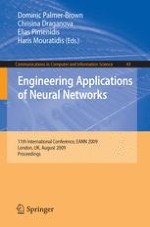2009 | OriginalPaper | Buchkapitel
Revealing the Structure of Childhood Abdominal Pain Data and Supporting Diagnostic Decision Making
verfasst von : Adam Adamopoulos, Mirto Ntasi, Seferina Mavroudi, Spiros Likothanassis, Lazaros Iliadis, George Anastassopoulos
Erschienen in: Engineering Applications of Neural Networks
Verlag: Springer Berlin Heidelberg
Aktivieren Sie unsere intelligente Suche, um passende Fachinhalte oder Patente zu finden.
Wählen Sie Textabschnitte aus um mit Künstlicher Intelligenz passenden Patente zu finden. powered by
Markieren Sie Textabschnitte, um KI-gestützt weitere passende Inhalte zu finden. powered by
Abdominal pain in childhood is a common cause of emergency admission in hospital. Its assessment and diagnosis, especially the decision about performing a surgical operation of the abdomen, continues to be a clinical challenge. This study investigates the possibilities of applying state of the art computational intelligence methods for the analysis of abdominal pain data. Specifically, the application of a Genetic Clustering Algorithm and of the Random Forests algorithm (RF) is explored. Clinical a
ppendicitis prediction
involves the estimation of at least 15 clinical and laboratory factors (features). The contribution of each factor to the prediction is not known. Thus, the goal of abdominal pain data analysis is not restricted to the classification of the data, but includes the exploration of the underlying data structure. In this study a genetic clustering algorithm is employed for the later task and its performance is compared to a classical K-means clustering approach. For classification purposes, tree methods are frequently used in medical applications since they often reveal simple relationships between variables that can be used to interpret the data. They are however very prone to overfitting problems. Random Forests, applied in this study, is a novel ensemble classifier which builds a number of decision trees to improve the single tree classifier generalization ability. The application of the above mentioned algorithms to real data resulted in very low error rates, (less than 5%), indicating the usefulness of the respective approach. The most informative diagnostic features as proposed by the algorithms are in accordance with known medical expert knowledge. The experimental results furthermore confirmed both, the greater ability of the genetic clustering algorithm to reveal the underlying data patterns as compared to the K-means approach and the effectiveness of RF-based diagnosis as compared to a single decision tree algorithm.
